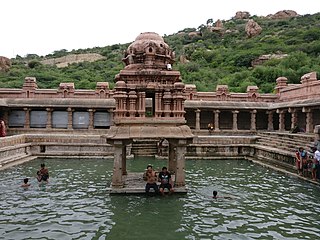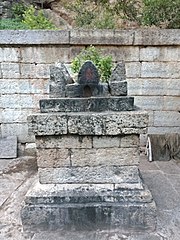| Yaganti | |
|---|---|
Sri Yaganti Uma Maheswara | |
 Yaganti Gopuram Sikharam | |
| Religion | |
| Affiliation | Hinduism |
| District | Nandyal |
| Deity | Shiva |
| Location | |
| State | Andhra Pradesh |
| Country | India |
| Geographic coordinates | 15°21′3″N78°08′22″E / 15.35083°N 78.13944°E |
| Architecture | |
| Completed | 15th century by Vijayanagar kings Hariharaya and Bukkaraya... |
Yaganti Temple or Sri Yaganti Uma Maheswara Temple is a temple of Shiva in Nandyal district in the India state of Andhra Pradesh. It was built according to Vaishnavaite traditions.[ citation needed ]














